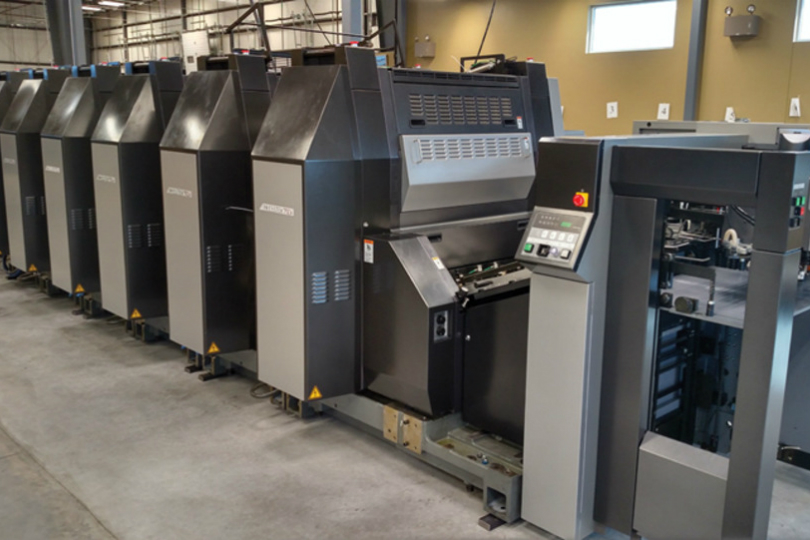Enhanced customer service is a critically planned and meticulously accomplished process that cannot be achieved overnight. Customer service needs to be personalized and when it comes to pleasing customers before or after purchase, the concept of ‘one size fits all’ just does not work.
Ever since the introduction of automated production, the commercial printing industry has been quick to reap its benefits in order to provide reformed customer service. When efficiently utilized, these automated systems have the potential to reduce costs, shorten production time and waive out processing errors that enables the commercial printers and online printing softwares to improve the quality and achieve higher volumes, while keeping the costs in check.

When it comes to automation, bringing about a big change seems like a daunting task. However, a large goal can be achieved by taking the initial small steps.
Web-to-Print.
Walking the customers through the entire process with the details can be time consuming. Moving to embrace the Web-to-Print solution can be a smart choice. The web-to-print portal allows businesses the ability to communicate 24/7 thus becoming a web print shop that never closes.
Customers can submit their orders at their convenience, at any time of the day and night. The benefit of this is that the customers have already provided the job details in the portal, like – description, quantity, special instructions, submitted the file to print and provided the shipping information. This not only reduces the amount of time taken, but also eliminates the chances of error.
Estimating Quotes.
When it comes to responding to inquiries about quotes, speed and consistency of response plays an important role, especially with the market being extremely competitive. Quick turnaround is important since customers are not willing to wait for a response to their request for a quote. Businesses with a faster response rate end up receiving the order.
The consistency depends upon the fact that no matter who puts the quote together, the number, estimating standards, inclusions of the quote requirements, access to historical information about similar jobs of the past have to be all be the same. This eradicates the risk of human error to its maximum capacity.
Quote automation is what will help achieve the desired consistency. Considering this, the automation is in the form of templates. Templates used on online printing software, web-to-print magento and e-commerce web-to-print softwares ensures that all the tasks and materials are considered while drafting the quote. It is crucial to have systems that support a range of templates required for all kinds of tasks. The offset job requires different templates as compared to short run digital and large format.
Automation of the quote drafting process means that sales representatives and CSRs can carry them out easily, which adds to business with a fast turnaround time. This allows the estimating team to focus on more complex jobs at hand.
Order Creation.
Once the quote is approved by the customer, they are not willing to wait. The ability of the business to accept the job and meet deadlines is seriously challenged – especially if the materials required to produce the job need to be purchased. The purchasing, production planning and operations teams need to have the job visible on the system almost immediately.
The order can enter the shop through different mediums, like – e-commerce web-to-print software, conversion of an estimate, over the phone or email or even in a spreadsheet. Except for phone and email, the on-boarding of the new jobs through any of the above sources can be automated.

Material Planning.
Many businesses, after accepting customer order realize that they do not have the required material to fulfill the job. Businesses need to stay proactive about updating the inventory. With the expected same day turnaround by the customers, critical levels in the inventory can call for trouble.
This is why businesses need to automate material planning. Businesses need to have a system in place that keeps a track of minimum levels, bare minimum levels, economic order quantities and lead timings for web-to-print magento. Web print shops can then use the information to update inventory levels, keep note of material requirement for already placed orders and create a purchasing plan according to a particular day, week or a month.
Production Workflow.
Often, the challenge that businesses face is getting the administration team share the date with the production team. Automating the sharing process can speed up the entire procedure and eliminate the need to re-enter the details already entered elsewhere previously.
Shipping.
On time delivery of the finished job to the customers is a top priority. Late deliveries can damage the reputation of the business and jeopardize the customer relationship. Automation can improve the on-time delivery rates significantly with real time integrations and batch shipping through various courier service companies. This cancels the requirement of third party systems and the task of manually entering the shipping orders. Automating shipping processes can keep the customers in loop by updating shipping notifications and providing tracking details.

Conclusion:
Although the above mentioned tasks are only a part of the process, automation of these tasks creates tremendous opportunity for businesses. But the automation is not a one time investment. It requires attention, investment and focus to keep the operations going and to produce the desired results. As workflows integrate with the traditional offset and digital that now shares space with high speed production and wide format ink-jet printing, the printing industry is soon to hit a tipping point, with automation being the main factor for it.
OhNoCrypto
via https://www.aiupnow.com
Chad Stewart, Khareem Sudlow
